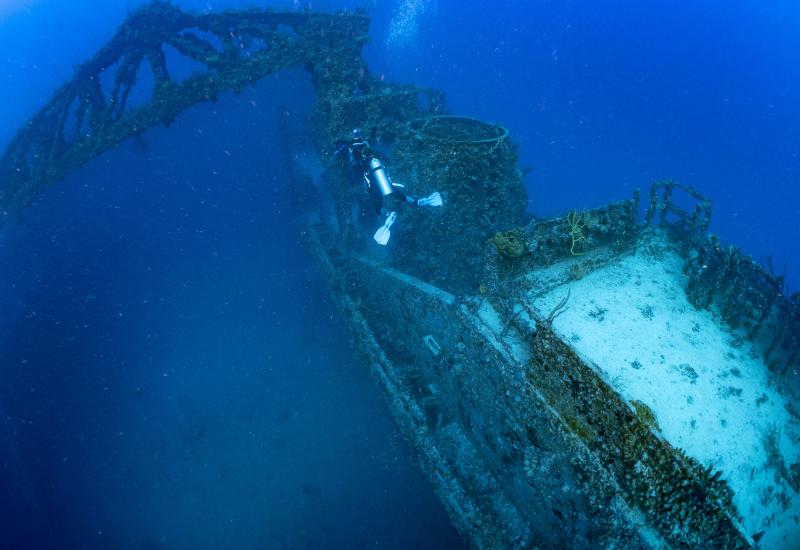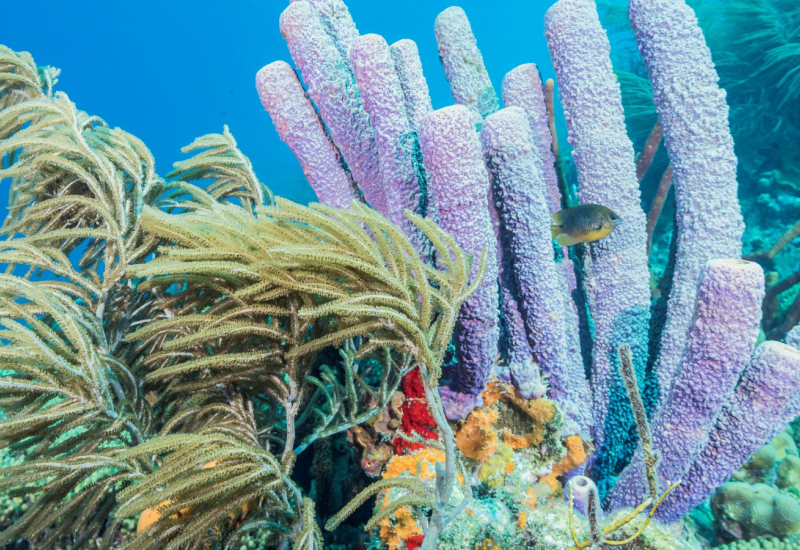Grand Cayman Travel Guide: Best Scuba Diving Sites in the World
You don’t know Grand Cayman — you couldn’t possibly. You may have been once or twice, logged a wall dive or 20, but either way, this is the tip of the iceberg (or, technically, seamount). For starters, no Caribbean destination delivers more sites: Combined, the three Cayman Islands (including Little Cayman and Cayman Brac) have 365 dive sites, though to dive every one is like trying to hit a moving target. Dive staff swap out mooring balls regularly to protect reefs from possible stress. It’s just one of the ways this destination is ever-evolving. The island also garnered 11 Top 100 Readers Choice Awards in our 2014 annual survey, including No. 1 for Overall Best Destination in the Caribbean/Atlantic. Let us count the reasons our readers love Grand Cayman.
1| Perfect for Underwater Photography
Marine biologist and photographer Alex Mustard favors Grand Cayman for hosting underwater-imaging workshops. “With photography, you need excellent conditions every day,” he says. “There is no point in telling people we are going to shoot in clear water, and then go out and not have it.” Here, visibility of 100 feet is the norm. One reason for the clear water is the island’s lack of naturally occurring freshwater runoff. And what did our annual survey say? Grand Cayman took the No. 1 spot in the Caribbean/Atlantic region for underwater photography.
2| Healthy Walls
The island also placed first for best wall diving in the region. The islands that make up the Caymans — Grand, Little and Brac — are the tips of submarine mountains. Because of this, the sheer number of wall dives is beyond compare. “The walls are interesting,” says Mustard. “They’re vertical, but they’re not like straight brick walls. There are gulleys, swim-throughs, overhangs and pinnacles. The features make your pictures look three-dimensional.”
The legendary walls put Grand Cayman on the map six decades ago, when recreational diving was in its infancy. At sites like North Wall’s Tarpon Alley and Eagle Ray Pass, West Bay’s Northwest Point and Big Tunnels, East End’s Babylon and Jack McKenney’s Canyon, the joy lies in the diversity.
3| Stingray City
If you don’t arrive on island via a cruise ship, don’t book activities as if you had. Midday sees the highest number of visitors at Stingray City; instead, go at dawn. What you get is a less-structured experience — there is still the PVC goody-bag packed with squid, but you don’t have to sit on your knees in a circle to be gifted a fistful of nuggets. An early-morning excursion — limited to six snorkelers — is a more organic experience. The animals, several at a time, curl over your bare feet, up your legs and across your arms. With fewer people in the water, the animals spend more time with each person. This experience is perfect for novices and nondivers, and one of the sites our readers surely had in mind when voting Grand Cayman No. 2 in the Caribbean/Atlantic for beginner diving.
4| Protected Reefs
For such a small island, Grand Cayman has a large number of forward-thinkers when it comes to the ocean, and it was named one of the best places for a healthy marine environment and grabbed the No. 2 spot for best overall diving in the Atlantic/Caribbean. Grand Cayman’s marine parks were among the Caribbean’s first, established in 1986. In 2008, an ambitious initiative called Dive 365 was launched. The goal: to name and add mooring buoys to 68 new dive sites so there would be a total of 365 in the islands, one for each day of the year. Dive 365 was also designed to enable dive operations to temporarily close sites so the reefs could have a chance to recover from diver pressure. “It is an example of not only our commitment to providing new and challenging experiences to the dive community,” says former Cayman Islands Department of Tourism director Shomari Scott, “but also our dedication to sustaining the environment.”
5| The Kittiwake
It’s been three years since the Kittiwake has taken up residence in the clear blue waters off Grand Cayman. The purpose-sunk vessel is located in a marine park and protected by law. On Jan. 5, 2011, the 251-foot-long ship was sunk in 60 feet of water to rest near the Sand Chute dive site, not far from Seven Mile Beach. Since that time, the wreck has been explored by thousands of divers and is most likely the reason the island got the third-place ranking for best wreck diving in the Caribbean/ Atlantic region. For good reason: The wreck is endlessly fascinating to explore — take a look down its smokestack and keep an eye out for a large grouper that often shelters near the prop.
6| Topside Fun
For an island to take top honors for best overall destination in its region, it has to offer more than diving. Grand Cayman offers vacation fun for every type of visitor, even ones with young kids. George Town is packed with restaurants, nightclubs and shops. If you’re looking for aquatic adventure of a different stripe, head to North Sound, and take a tour of the sound’s forest of mangroves to spy iguanas and birds that you otherwise might miss. Take the kids to swim with turtles at West Bay’s turtle farm or kick back on Seven Mile Beach.
7| Macro Life
If you’re shooting macro, stay shallow in the sand, reefs or tops of walls to find critters like flamingo tongues, neck crabs, Pederson’s cleaner, seawhip and whitefoot shrimps, golden roughhead and secretary blennies. Look in barrel sponges for arrow crabs and in tiny holes in corals for blennies. Grand Cayman’s tiny treasures landed it a Top Five spot for best macro diving.
There’s plenty of macro on the massive Kittiwake too, from anemones (above the dive bell) to arrow crabs, blennies, gobies, shrimp, urchins and small reef fish of all kinds — enough to keep a photographer busy for many dives.
8| Shore Diving
Is there anything more pleasurable than being able to dive a reef simply by wading in? Grand Cayman was second only to Bonaire in best shore diving, and while the island doesn't really have beach-accessible sites, it does have a number of easy-to-access shore dives. Two of the most popular sites are endlessly fun to explore: To dive Devil’s Grotto and Eden Rock, you enter from a concrete pier and dive ladder that’s set into the ironshore just south of George Town. Devil’s Grotto is flooded with light and silversides in summer, and is popular with photographers. Eden Rock offers a similar profile: a reef that is honeycombed by small caverns, tunnels and swim-throughs.
Both Cobalt Coast Dive Resort, on West Bay’s north shore, and Sunset House, just south of George Town, offer shore diving 24/7. A short swim from shore at Cobalt Coast gets you to a mini wall, but kick a bit farther out to a deeper wall where you’ll likely encounter tarpon, turtles and nurse sharks.
Sunset Reef is a fringing reef with a gentle slope to deeper water. Practice your compass skills to find Amphitrite, a 9-foot-tall bronze mermaid statue, and the Nicholson landing craft. Don’t be surprised if the Atlantis touring submarine shows up, and you become the star attraction on the reef.
Dive Grand Cayman Now:
Sunset House
Divetech / Cobalt Coast
Red Sail Sports
Don Foster's Dive
Indepth Watersports
**
**
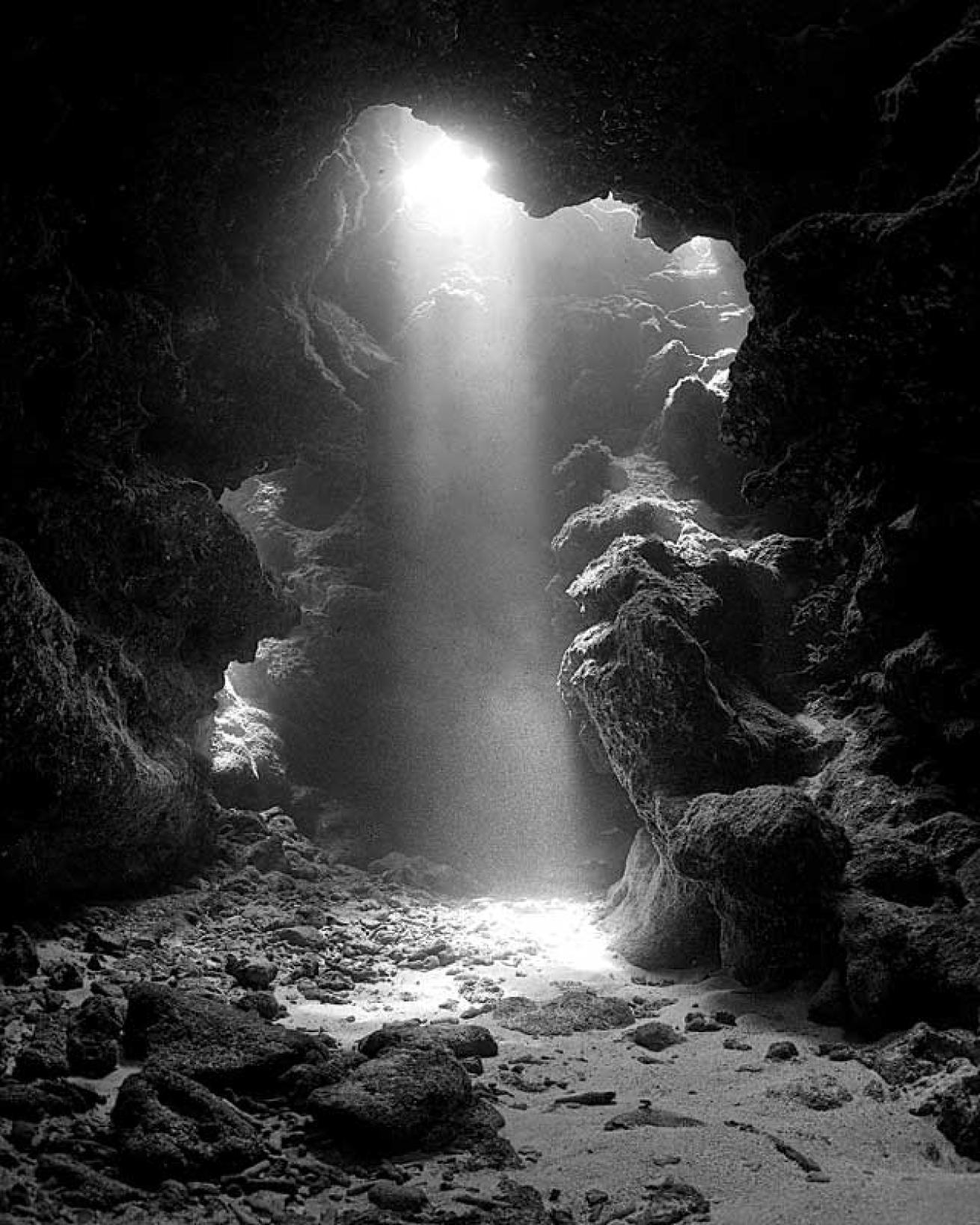
Ellen CuylaertsShafts of sunlight illuminate the shore-accessible site Devil’s Grotto.
You don’t know Grand Cayman — you couldn’t possibly. You may have been once or twice, logged a wall dive or 20, but either way, this is the tip of the iceberg (or, technically, seamount). For starters, no Caribbean destination delivers more sites: Combined, the three Cayman Islands (including Little Cayman and Cayman Brac) have 365 dive sites, though to dive every one is like trying to hit a moving target. Dive staff swap out mooring balls regularly to protect reefs from possible stress. It’s just one of the ways this destination is ever-evolving. The island also garnered 11 Top 100 Readers Choice Awards in our 2014 annual survey, including No. 1 for Overall Best Destination in the Caribbean/Atlantic. Let us count the reasons our readers love Grand Cayman.
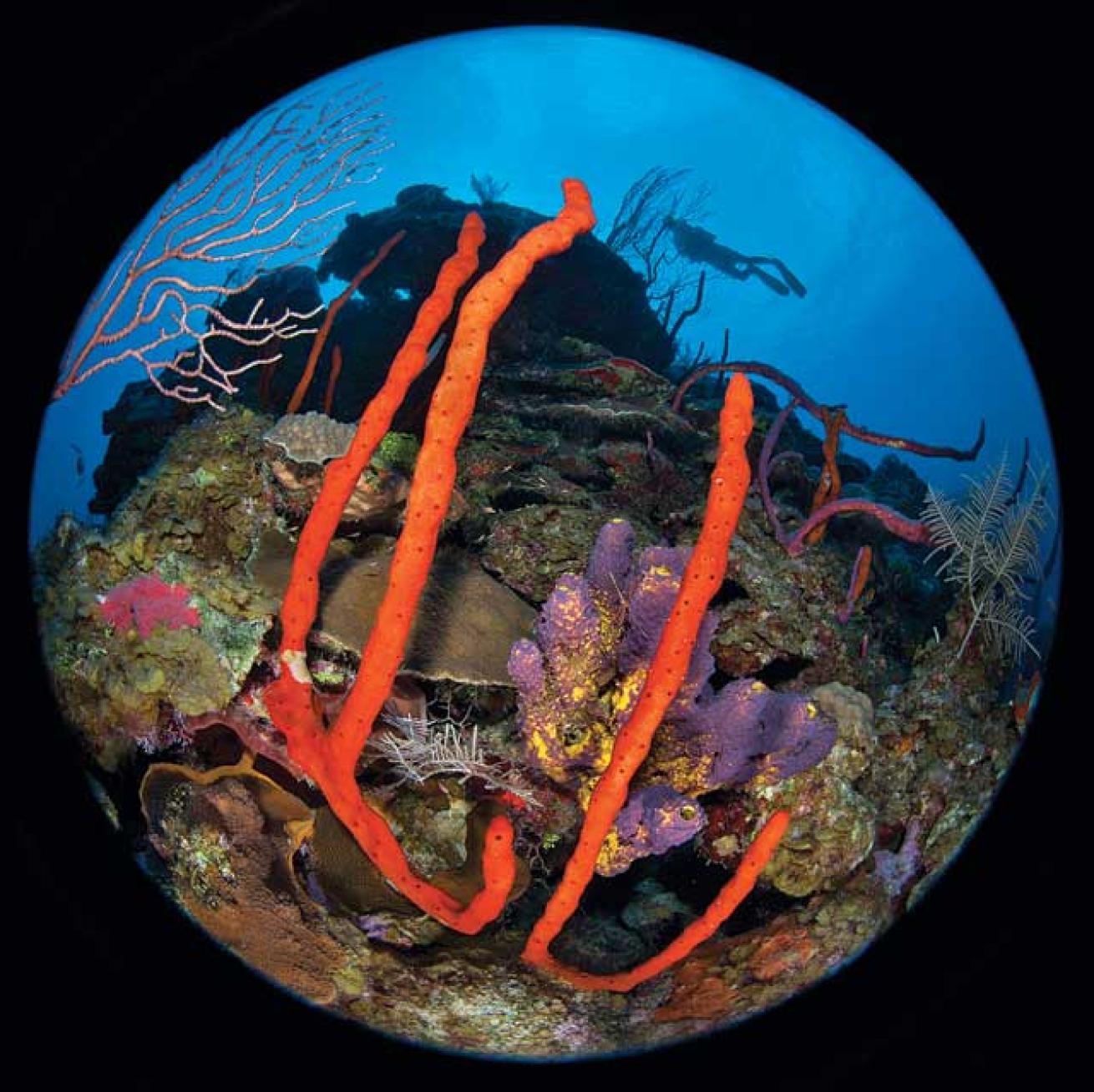
Alex Mustard/Naturepl.comThe reefs of Grand Cayman's East End burst with color.
1| Perfect for Underwater Photography
Marine biologist and photographer Alex Mustard favors Grand Cayman for hosting underwater-imaging workshops. “With photography, you need excellent conditions every day,” he says. “There is no point in telling people we are going to shoot in clear water, and then go out and not have it.” Here, visibility of 100 feet is the norm. One reason for the clear water is the island’s lack of naturally occurring freshwater runoff. And what did our annual survey say? Grand Cayman took the No. 1 spot in the Caribbean/Atlantic region for underwater photography.
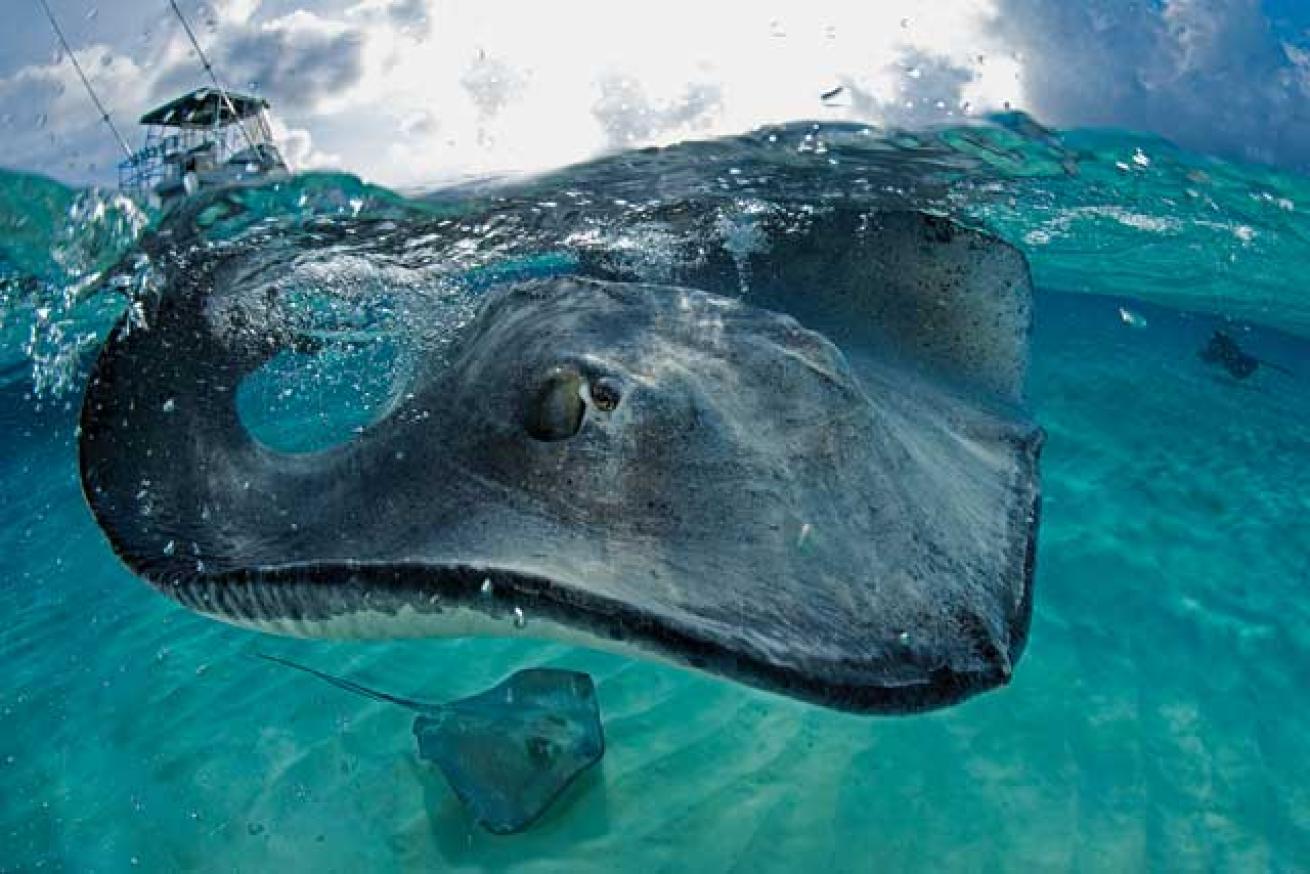
Claudio GazzaroliBeginners will delight in the shallow depths, clear water and graceful rays at Stingray City.
2| Healthy Walls
The island also placed first for best wall diving in the region. The islands that make up the Caymans — Grand, Little and Brac — are the tips of submarine mountains. Because of this, the sheer number of wall dives is beyond compare. “The walls are interesting,” says Mustard. “They’re vertical, but they’re not like straight brick walls. There are gulleys, swim-throughs, overhangs and pinnacles. The features make your pictures look three-dimensional.”
The legendary walls put Grand Cayman on the map six decades ago, when recreational diving was in its infancy. At sites like North Wall’s Tarpon Alley and Eagle Ray Pass, West Bay’s Northwest Point and Big Tunnels, East End’s Babylon and Jack McKenney’s Canyon, the joy lies in the diversity.
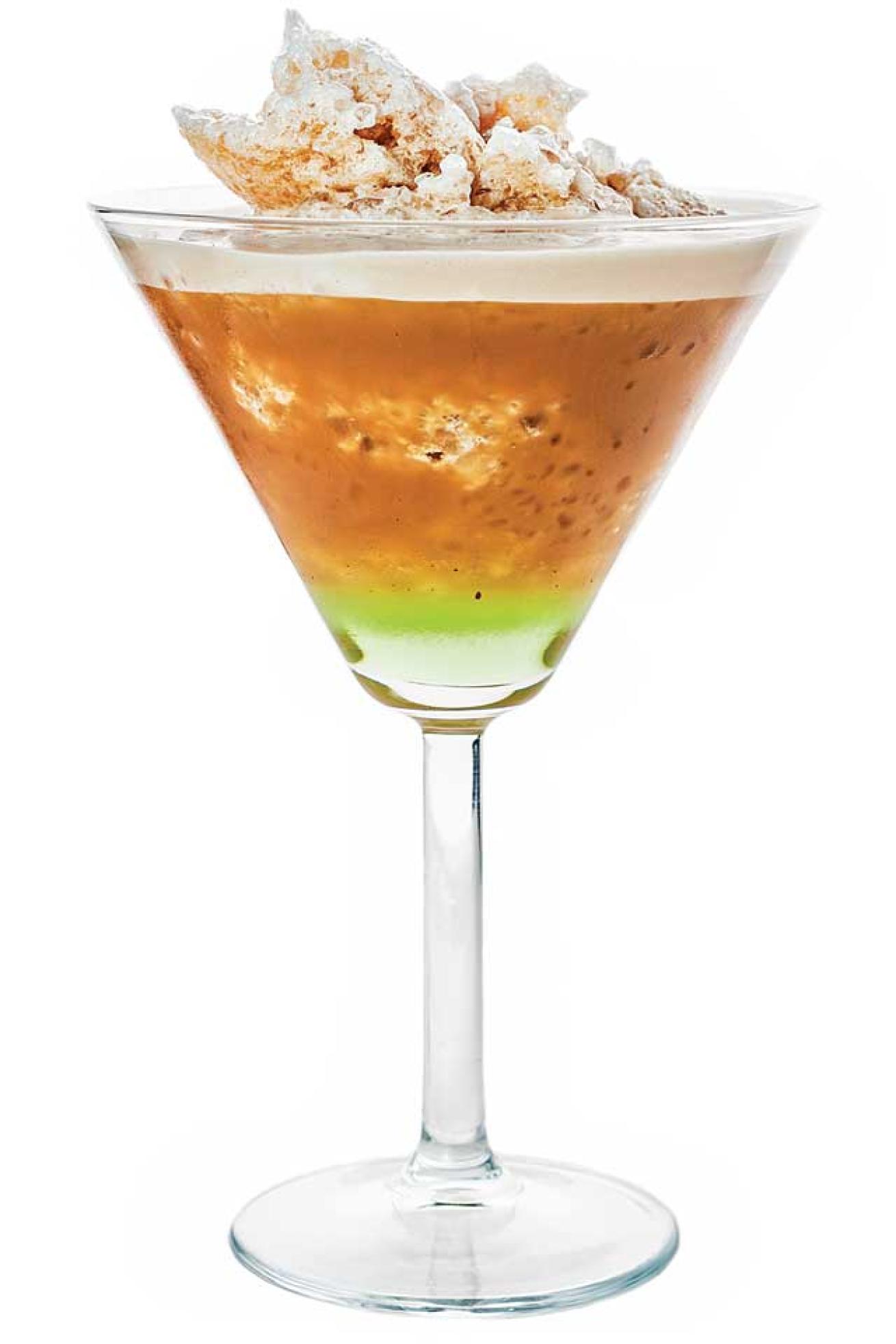
ShutterstockGo for the frozen mudslides — rumor has it, the vodka-Kahlua-Bailey’s potion was invented here. Go for the show of kitesurfers catching air (Bonus: That other cocktail — the mix courtesy of the limbic system —is free, as you imagine what it’s like to try it.) Go because Wreck Bar and Grill on Rum Point Beach is a popular hangout for those who can find it on the east end of the North Sound.
3| Stingray City
If you don’t arrive on island via a cruise ship, don’t book activities as if you had. Midday sees the highest number of visitors at Stingray City; instead, go at dawn. What you get is a less-structured experience — there is still the PVC goody-bag packed with squid, but you don’t have to sit on your knees in a circle to be gifted a fistful of nuggets. An early-morning excursion — limited to six snorkelers — is a more organic experience. The animals, several at a time, curl over your bare feet, up your legs and across your arms. With fewer people in the water, the animals spend more time with each person. This experience is perfect for novices and nondivers, and one of the sites our readers surely had in mind when voting Grand Cayman No. 2 in the Caribbean/Atlantic for beginner diving.
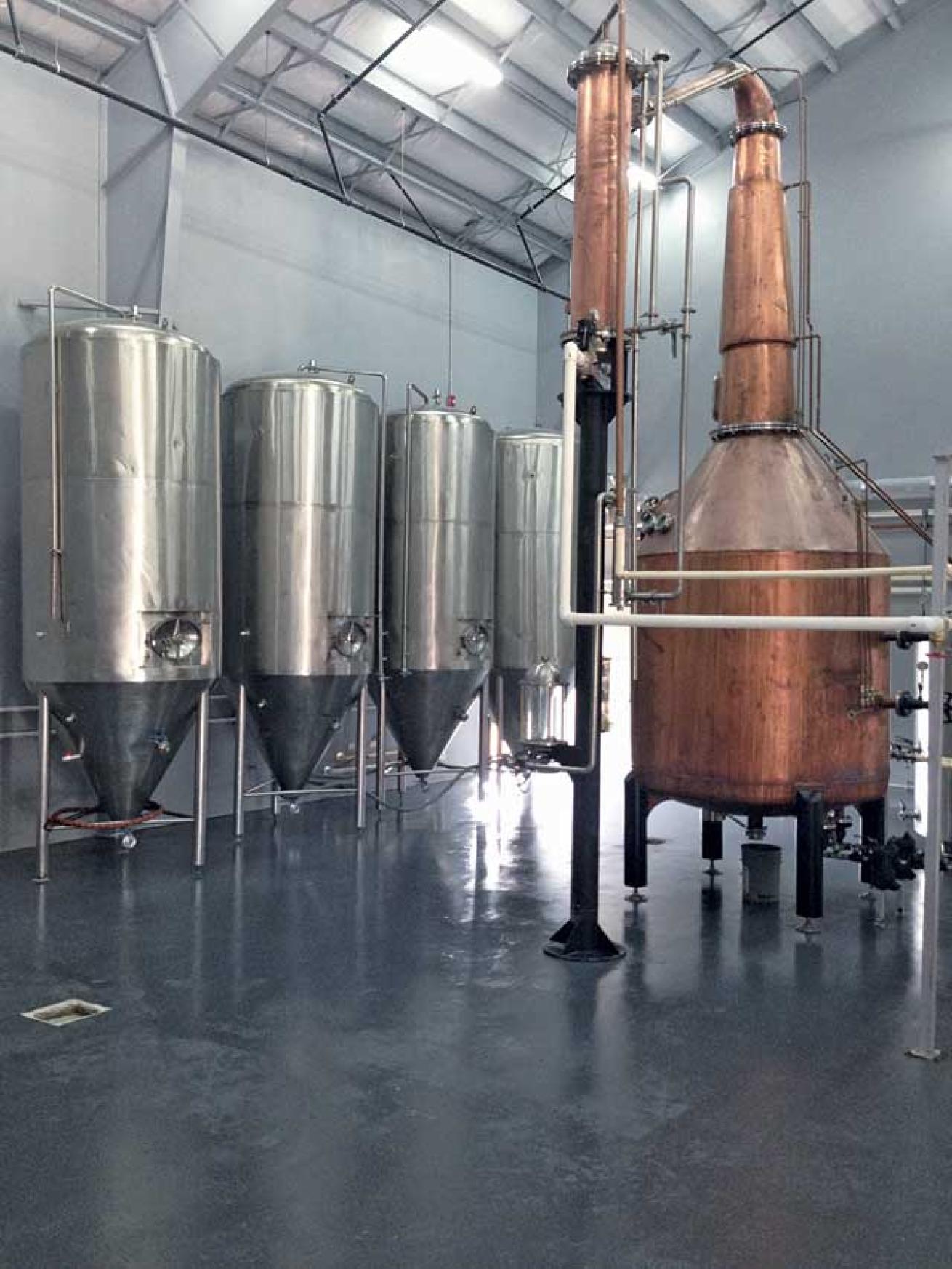
Courtesy Seven Fathoms RumSeven Fathoms Rum is made on island and aged in barrels sunk in the ocean where waves function as distillers, turning them naturally. Tours are daily at 9 a.m. to 4:30 p.m. Buy as much as you like, but know that you can import only two liters (three bottles) of Seven Fathoms per person.
4| Protected Reefs
For such a small island, Grand Cayman has a large number of forward-thinkers when it comes to the ocean, and it was named one of the best places for a healthy marine environment and grabbed the No. 2 spot for best overall diving in the Atlantic/Caribbean. Grand Cayman’s marine parks were among the Caribbean’s first, established in 1986. In 2008, an ambitious initiative called Dive 365 was launched. The goal: to name and add mooring buoys to 68 new dive sites so there would be a total of 365 in the islands, one for each day of the year. Dive 365 was also designed to enable dive operations to temporarily close sites so the reefs could have a chance to recover from diver pressure. “It is an example of not only our commitment to providing new and challenging experiences to the dive community,” says former Cayman Islands Department of Tourism director Shomari Scott, “but also our dedication to sustaining the environment.”
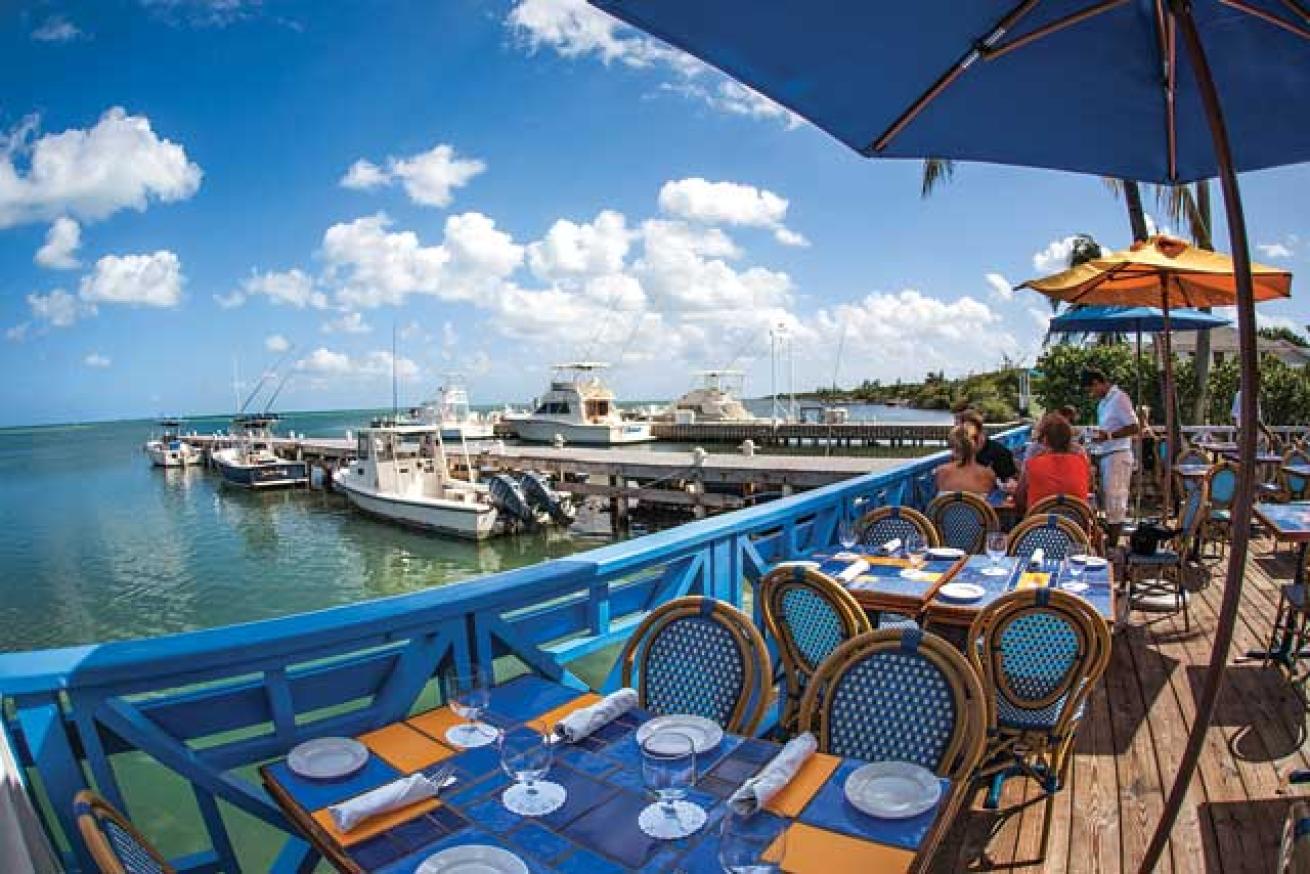
Courtesy Calypso GrillMake reservations for the deck at Calypso Grill in West Bay: It’s an upscale eatery, tucked away from the main drag. Calypso’s offers an ever-changing menu, where the fish is always just caught, and even lionfish can land among the offerings.
5| The Kittiwake
It’s been three years since the Kittiwake has taken up residence in the clear blue waters off Grand Cayman. The purpose-sunk vessel is located in a marine park and protected by law. On Jan. 5, 2011, the 251-foot-long ship was sunk in 60 feet of water to rest near the Sand Chute dive site, not far from Seven Mile Beach. Since that time, the wreck has been explored by thousands of divers and is most likely the reason the island got the third-place ranking for best wreck diving in the Caribbean/ Atlantic region. For good reason: The wreck is endlessly fascinating to explore — take a look down its smokestack and keep an eye out for a large grouper that often shelters near the prop.
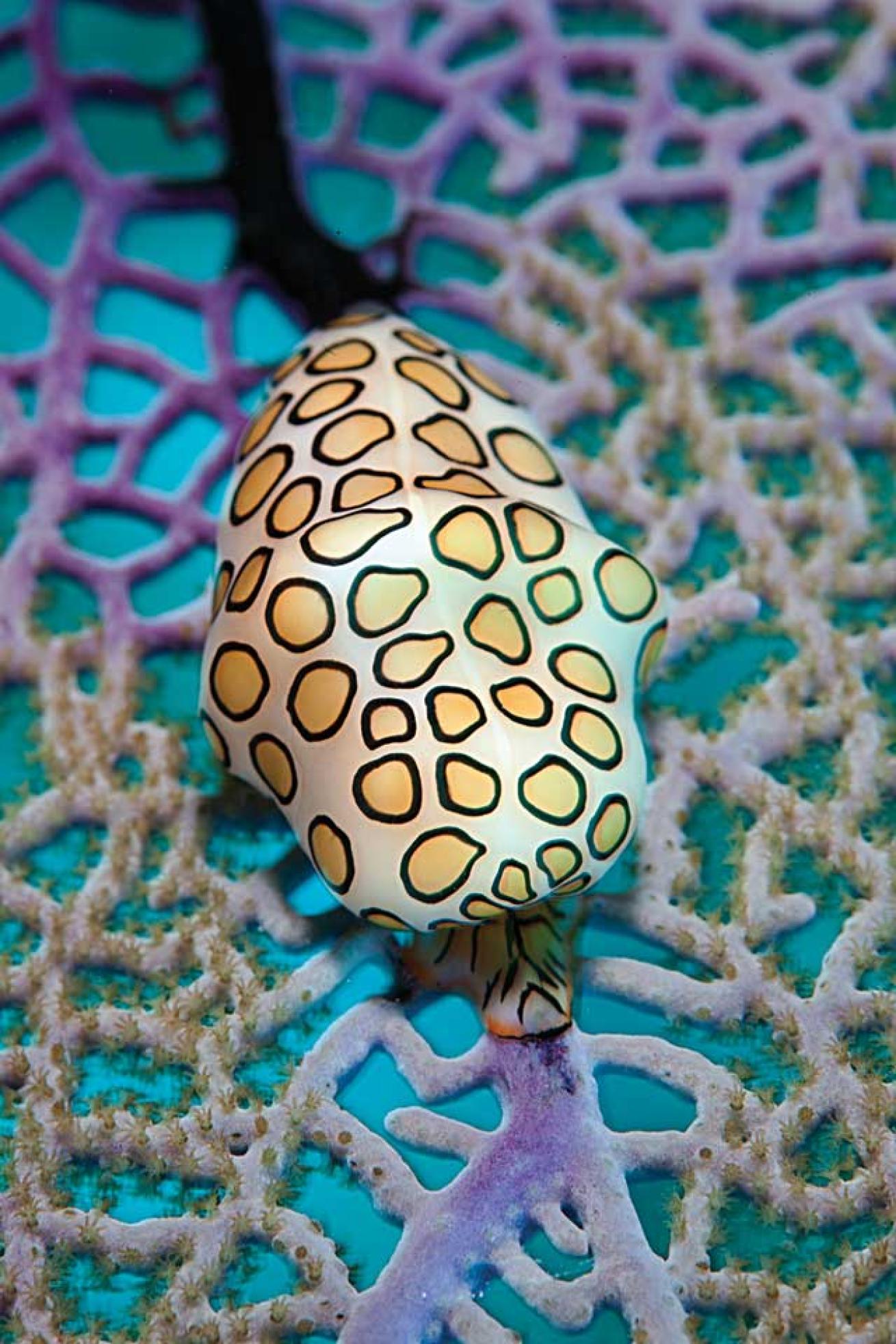
Ethan DanielsThe flamingo tongue’s bright markings are its mantle; its shell color is plain.
6| Topside Fun
For an island to take top honors for best overall destination in its region, it has to offer more than diving. Grand Cayman offers vacation fun for every type of visitor, even ones with young kids. George Town is packed with restaurants, nightclubs and shops. If you’re looking for aquatic adventure of a different stripe, head to North Sound, and take a tour of the sound’s forest of mangroves to spy iguanas and birds that you otherwise might miss. Take the kids to swim with turtles at West Bay’s turtle farm or kick back on Seven Mile Beach.
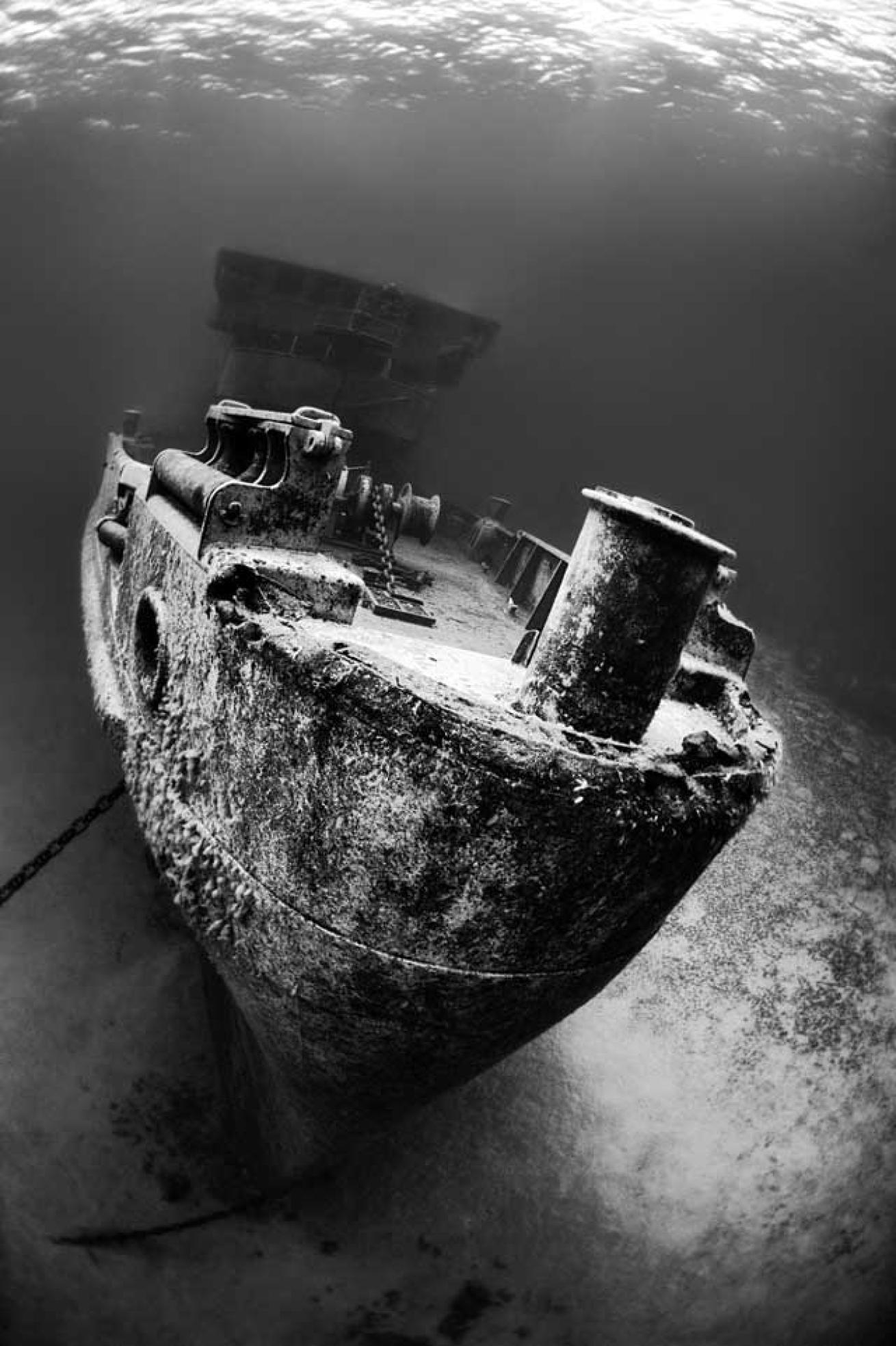
Predrag Vuckovic/iStockphotoPhoto opps and exploration possibilities abound on the Kittiwake.
7| Macro Life
If you’re shooting macro, stay shallow in the sand, reefs or tops of walls to find critters like flamingo tongues, neck crabs, Pederson’s cleaner, seawhip and whitefoot shrimps, golden roughhead and secretary blennies. Look in barrel sponges for arrow crabs and in tiny holes in corals for blennies. Grand Cayman’s tiny treasures landed it a Top Five spot for best macro diving.
There’s plenty of macro on the massive Kittiwake too, from anemones (above the dive bell) to arrow crabs, blennies, gobies, shrimp, urchins and small reef fish of all kinds — enough to keep a photographer busy for many dives.
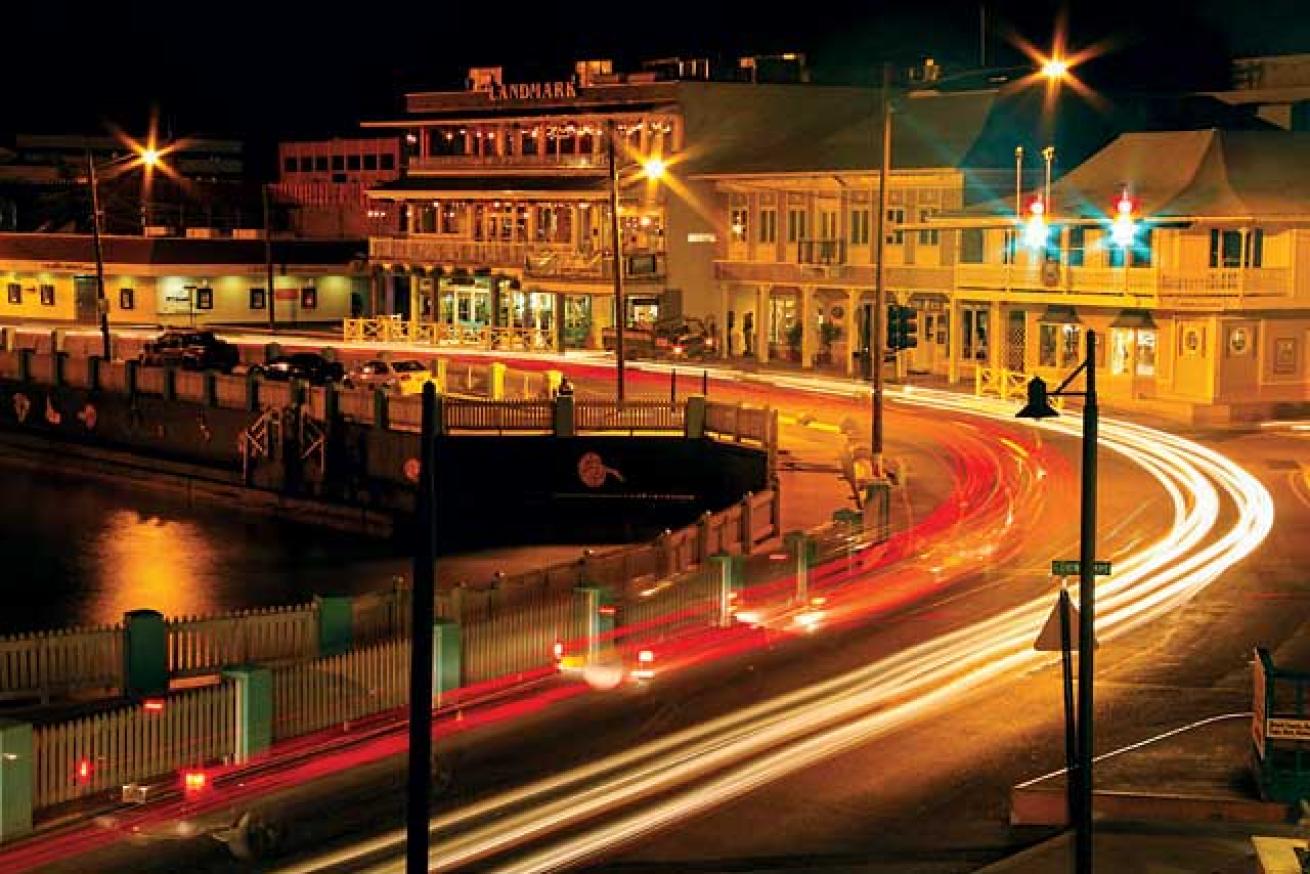
Panoramic Images/Getty ImagesVisitors to George Town will find no shortage of fun, cultural, family-friendly, adventurous and entertaining activities to do during surface intervals. You can take a submarine tour of George Town Harbor, sign up for a glass-bottom boat tour, try parasailing, take a rum distillery tour, visit art galleries or a historical museum, find gifts or buy something little for yourself in a wonderful shopping district and eat at a diverse number of restaurants. For nightlife, Seven Mile Beach has a number of nightclubs and bars.
8| Shore Diving
Is there anything more pleasurable than being able to dive a reef simply by wading in? Grand Cayman was second only to Bonaire in best shore diving, and while the island doesn't really have beach-accessible sites, it does have a number of easy-to-access shore dives. Two of the most popular sites are endlessly fun to explore: To dive Devil’s Grotto and Eden Rock, you enter from a concrete pier and dive ladder that’s set into the ironshore just south of George Town. Devil’s Grotto is flooded with light and silversides in summer, and is popular with photographers. Eden Rock offers a similar profile: a reef that is honeycombed by small caverns, tunnels and swim-throughs.
Both Cobalt Coast Dive Resort, on West Bay’s north shore, and Sunset House, just south of George Town, offer shore diving 24/7. A short swim from shore at Cobalt Coast gets you to a mini wall, but kick a bit farther out to a deeper wall where you’ll likely encounter tarpon, turtles and nurse sharks.
Sunset Reef is a fringing reef with a gentle slope to deeper water. Practice your compass skills to find Amphitrite, a 9-foot-tall bronze mermaid statue, and the Nicholson landing craft. Don’t be surprised if the Atlantis touring submarine shows up, and you become the star attraction on the reef.
Dive Grand Cayman Now:
Sunset House
Divetech / Cobalt Coast
Red Sail Sports
Don Foster's Dive
Indepth Watersports
**
**

